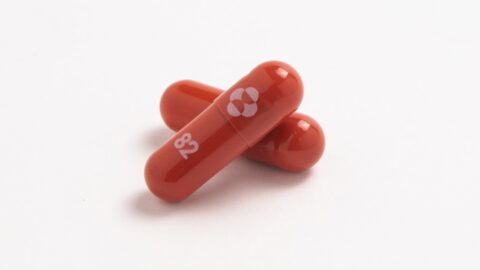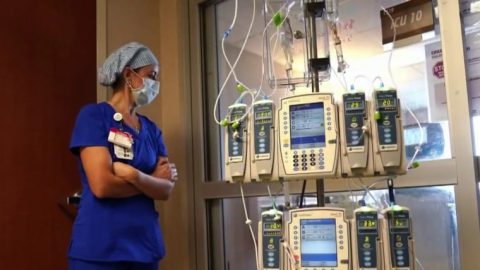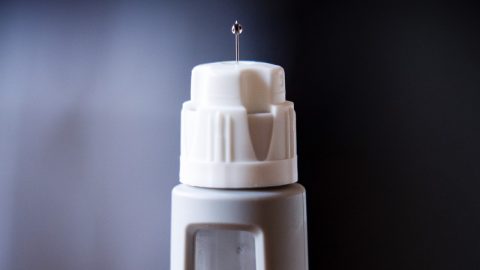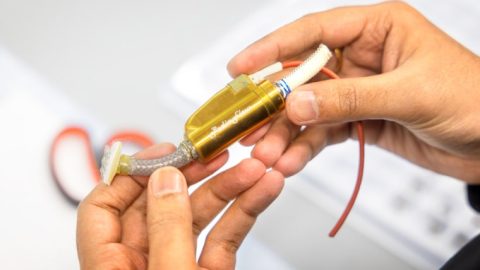
More people in the U.S. are overdosing from cocaine, methamphetamine and prescription stimulants and there’s no approved medication to help them get off the drugs. Amid public health warnings about rising stimulant use disorders, the Food and Drug Administration is urging drugmakers to develop treatments for cocaine and methamphetamine addiction.
The hope is that it will trigger a rush of clinical trial testing for drug treatments for stimulant use disorder, aiming to fill a major gap in the response to the overdose crisis in the U.S.
Although the FDA has never ruled it out, in draft guidance released last month, the agency expressed openness for the first time to trials for new treatments that reduce the use of cravings for illegal stimulants, rather than solely looking at complete drug abstinence, a move welcomed by addiction specialists.
Opioids, mostly fentanyl, continue to be the leading cause of death in the country’s ongoing drug overdose crisis. A growing number of fatalities, however, are linked to stimulants, whether in combination with opioids or on their own, according to the Centers for Disease Control and Prevention.
Although there are several drug treatment options such as methadone available for opioids, none have been developed for cocaine, methamphetamine or prescription stimulant addictions.
There’s renewed urgency to help people with stimulant use disorders as drugs like cocaine and meth have become cheaper, easier to find and more potent. Now, the need for treatments has crashed headlong into a lack of funding and years of limited research that’s produced less-than-inspiring results, experts say.
“Stopping prolonged stimulant use is extremely difficult without medical help,” said Dr. Ayana Jordan, an addiction psychiatrist at NYU Langone Health in New York City. There are “mental health challenges and physical withdrawal including stomach and bowel problems, changes in mood, irritability, depression, disordered sleep that happens and people not knowing how to deal with it all alone.”
Finding effective treatments for these kinds of substance use disorders is a challenge that could take years, experts say.
So far, efforts are off to a slow start.
“If you look at clinicaltrials.gov,” said Marta Sokolowska, the deputy center director for substance use and behavioral health in the FDA’s Center for Drug Evaluation and Research, “and you compare the number of clinical trials for stimulant use disorder versus other disorders, such as oncology, you will see that the number of clinical trials are not maybe as great as it could be.”
Jordan had a more blunt assessment.
“There’s nothing that I have seen on the horizon or even clinical trials that are promising,” Jordan said.
‘No single magic bullet’
Stimulants, such as cocaine and meth, elevate levels of a chemical in the brain called dopamine, which is responsible for regulating mood and producing feelings of pleasure and euphoria. Over time, these drugs can alter the brain’s reward system — a complex network responsible for pleasure, motivation and reinforcing behaviors — leading to addiction and causing structural changes in the brain associated with memory and decision-making.
Similar to opioids, “it totally takes over our natural reward system,” Jordan said, “so people behave in a way that is not consistent with normal functioning.”
It’s a “delicate balance” finding effective treatments, Jordan said, noting that a drug for stimulant use disorders would ideally bring the brain back to its natural state without causing further damage to it, a goal that scientists have yet to achieve with stellar results.
What’s more, unlike opioids, there is unlikely to be a universal treatment approach for stimulant use disorders. Cocaine and methamphetamine, for example, both increase levels of dopamine in the brain, albeit through different processes. As a result, people using cocaine may respond and behave very differently from those using methamphetamine.
There’s no “single magic bullet,” said Dr. Andrew Herring, the chief of addiction medicine at Alameda Health System in Oakland. “This is an incredibly complex disorder that is different in every person and within every person is different day to day.”
‘Underwhelming’ treatment results
To address the overdose crisis, Sokolowska said the FDA initially focused its attention on developing treatments for opioid use disorders, but it later “became very clear and very apparent” that the crisis had shifted and changed to include stimulants.
In 2021, about 1.6 million people ages 12 and up in the U.S. had a methamphetamine use disorder and 1.4 million had a cocaine use disorder, according to data from the Substance Abuse and Mental Health Services Administration. In the last 12 months leading up to May of this year, there were over 34,000 methamphetamine-related deaths and over 28,000 cocaine-related deaths.
In the draft guidance, the FDA encouraged drug companies to launch clinical trials for cocaine, methamphetamine and prescription stimulant addictions. Promising drugs could qualify for expedited approval through the FDA’s fast-track process, the agency said.
Given the complexities of addiction — for example, people may use multiple illicit drugs, different amounts and methods — participants in clinical trials may need to be monitored for at least six months before they’re considered drug free, according the FDA guidance.
“Stimulant use disorder, it’s a really broad group of disorders,” Sokolowska said. “There are different patterns of use. There are also differences in long-term effects of using these substances, which is part the reason why it’s been so challenging to date to develop and to review and approve effective treatments.”
Dr. Scott Hadland, an addiction specialist at MassGeneral Hospital for Children in Boston, said the FDA’s draft guidance for developing drugs is a big deal.
“We don’t have a lot to go on in terms of clinical guidelines,” Hadland said.
There have been previous studies that showed promise in treating stimulant use disorder, but the results have been less than satisfying, he said.
A study published in 2021 in the New England Journal of Medicine looked at the use of naltrexone in combination with bupropion to treat methamphetamine use disorder. Naltrexone is commonly prescribed to treat opioid and alcohol use disorders, while bupropion is an antidepressant known for reducing cravings for cigarettes. The study — which included about 400 patients randomized to receive the treatment or a placebo — found that about 14% of participants who got the combination treatment consistently tested negative for methamphetamine in their urine, compared to only 2.5% of those who got placebos.
That means for every nine or so patients who got the combination treatment, just one had a favorable response, Hadland said.
“It was sort of underwhelming,” Hadland said. “And that’s kind of the story of all these trials that have been done.”
Michael McDonell, an associate professor of community and behavioral health at Washington State University, said research teams throughout the U.S. have been trying to find a medication that works for stimulant drugs for more than 40 years.
Unfortunately, he said, the drugs developed so far haven’t been as successful as methadone and buprenorphine were for opioids. One example, he said, included a cocaine vaccine from researchers at Baylor College of Medicine in Houston.
“It worked, but not overwhelmingly,” McDonell said. “I am not optimistic that we will find a medication for stimulant drugs that is as effective as medications for opioid use disorder.”
Jordan noted the potential use of monoclonal antibodies that are designed to prevent substances, like cocaine and meth, from binding to receptors in the brain, although those are still in the early phase of development.
“We’re not ready for prime time at all,” she said.
What helps people stay sober
In fact, the most successful approaches for helping people dealing with stimulant addiction so far have centered around behavioral interventions, rather than medications, Hadland said.
“You basically incentivize people to not have positive urine drug tests,” he said.
In California, for example, people are rewarded for negative drug tests with cash — up to $599 over six months — under the state’s so-called contingency management program. Similar approaches have been successful in helping people lose weight, quit smoking and change other behaviors.
“If it was a medication, the FDA would have approved it 30 years ago,” McDonell said, referring to the approach. Patients who undergo contingency management, he said, are two to three times more likely to stop using stimulants, compared to patients who don’t receive the intervention.
But Herring said that while that approach may work for some people, it still doesn’t get at the biological causes of addiction.
“What actually leads to disorder is this complex congregation of psychological, psychiatric, cardiovascular and emotional events,” he said.
Scientists are just at the beginning of discovering treatments, Herring said, noting that research so far has not been adequately funded.
“Most people caring for people suffering from substance use disorders, particularly stimulants, are working in really scandalously underfunded situations,” he said. “It feels like how we treated chest pain 50 years ago or 100 years ago before we even understood atherosclerosis and plaque rupture and myocardial infraction,” he said.
“We’ve been very focused about the fact that it’s not only about abstinences,” Sokolowska said. Other endpoints that could be examined, she said, include changing the patterns of use of stimulants or changing the disease status. Reduced cocaine use, while not ideal, could still be considered a positive development, for example.
The FDA is diligently working to increase the availability and accessibility of treatments for substance use disorder.
“There is uncertainty because the impact of stimulants on humans is not as well studied as we had hoped,” Sokolowska said.
The FDA will accept comments on its draft guidance until Dec. 4.
“It’s our priority to address this very, very important medical need,” Sokolowska said. “We are open for business.”
Follow NBC HEALTH on Twitter & Facebook.










Recent Comments